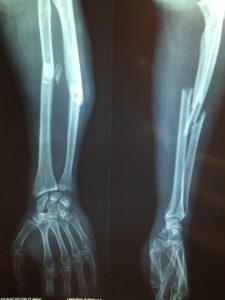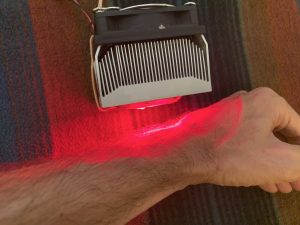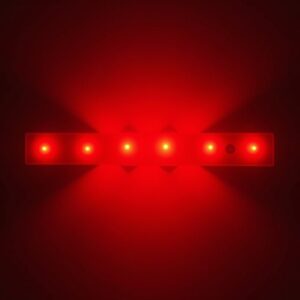Broad-Spectrum, Near-Infrared Light Therapy
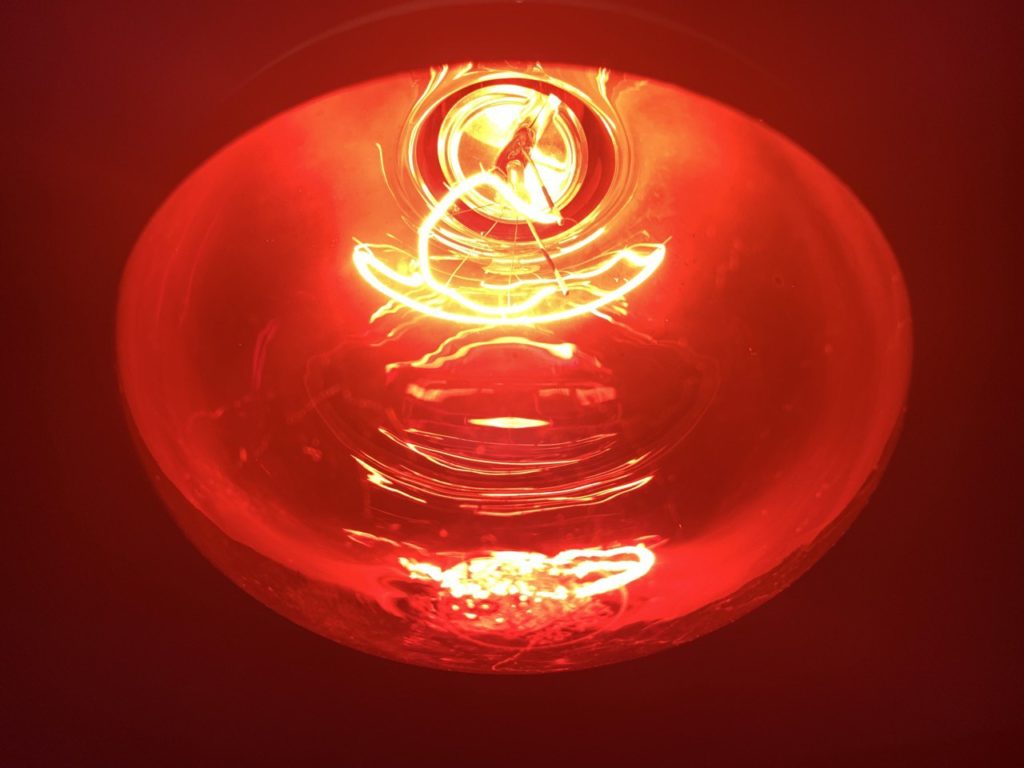
Light therapy can get confusing due to the numerous different types of products, light sources and characteristics of treatment devices sold for potential use. While a large majority of devices on the market are focused on “light-emitting diodes” or LEDs, it’s worth noting that they have a very narrow light spectrum. Due to this narrow spectrum, LED-based devices provide a very pure color. In an attempt to compensate, some LED devices use two or more different color LEDs, although the spectrum or color of light is still generally quite limited as compared to more natural light.
While research shows benefits with LED light therapy, there are other light sources that provide a broader spectrum of light that includes more shades or colors at the same time. Although little research exists comparing the two approaches, broad-spectrum treatment devices should not be dismissed, as they show promise in treating a number of different health conditions.
For treatment, near-infrared, incandescent light bulbs are some of the most readily available sources of broad-spectrum, near-infrared light. These bulbs have a red coating and produce both red visible light and near-infrared light which is invisible to the human eye but can be felt as a penetrating heat. Most of the published research on these types of bulbs has focused on versions that use water-filters that make the spectrum similar to the near-infrared portion of normal sunlight.
Light Therapy for Pain and Inflammation
Autoimmune-Type Pain of the Spine and Pelvis
One of the applications of near-infrared light therapy is for pain and inflammatory conditions. A study on low-back pain due to autoimmune-types of arthritis of the spine used near-infrared light therapy for 30 minutes twice daily for six days (Klemm 2022). At the end of treatment, pain levels were reduced 36% on average. Notably, improvements in pain levels were already felt by day two.
A similar trial used near-infrared light for treating inflamed sacro-iliac joints—low back pain at the junction between the sacrum and the pelvis. The treatment consisted of twice-daily, 20-minute sessions for five days (Xu 2019). At the end of the five-day treatment, pain was reduced 18% and stiffness was significantly improved. Blood flow to the site was also increased by 37%.
As both studies had a very short treatment duration of less than one week, longer studies would be interesting to see if further benefits and pain reduction are possible.
Fibromyalgia
Fibromyalgia is a poorly understood, but common type of whole-body pain. Most standard treatments for fibromyalgia provide modest benefits with patients still experiencing significant residual symptoms. A trial using whole-body, near-infrared light therapy that increased core body temperature found that with just three treatments pain levels were reduced by 30% for two-thirds of fibromyalgia patients (Walz 2013). A separate study explored a similar whole-body, near-infrared light therapy treatment and also found improvements over a standard approach (Brockow 2007).
While these results are interesting, it is worth noting that whole-body treatment to raise core body temperature is significantly more complicated than being exposed to near-infrared light from a standard heat lamp or bulb-type light source.
Wound Healing
Wound healing is a particularly promising area of treatment for broad-spectrum, near-infrared light therapy. Near-infrared light therapy has been found to (Hoffmann 2009):
- Reduce pain levels
- Decrease pain medicine use
- Provide faster wound closer
- Improve cosmetic outcomes
In patients with recent skin wounds or injuries, near-infrared light therapy reduced pain medicine use by over 50%. Severe burn wound closure was 90% complete by day nine as compared to day 13 in the control group. For chronic ulcers, there was complete wound closure by day 18 as compared to day 42 in the control group (Hoffmann 2009).
A case of chronic throat problems after throat cancer treatment also shows the promise of near-infrared light therapy for chronic wound healing (Hoffman 2017). Due to having throat cancer, the patient initially had his throat resected in an attempt to remove the cancerous lesion. Unfortunately, the cancer grew back and was then treated with radiation and chemotherapy. Because of the damage to his throat, the patient could no longer eat or swallow normally and had to use a feeding tube. He couldn’t even swallow his saliva and had to wake up periodically to spit throughout the night. His quality of life was reported to be quite poor.
In an attempt to improve his condition, near-infrared light therapy was applied. By day two, he slept through the night for the first time since the problems began. By day five he was able to swallow soft food. After two and a half weeks, he was eating normal food again. Such a rapid recovery is quite profound, suggesting significant potential for infrared therapy in at least a subset of cases.
Infrared Heat-Lamp Bulbs
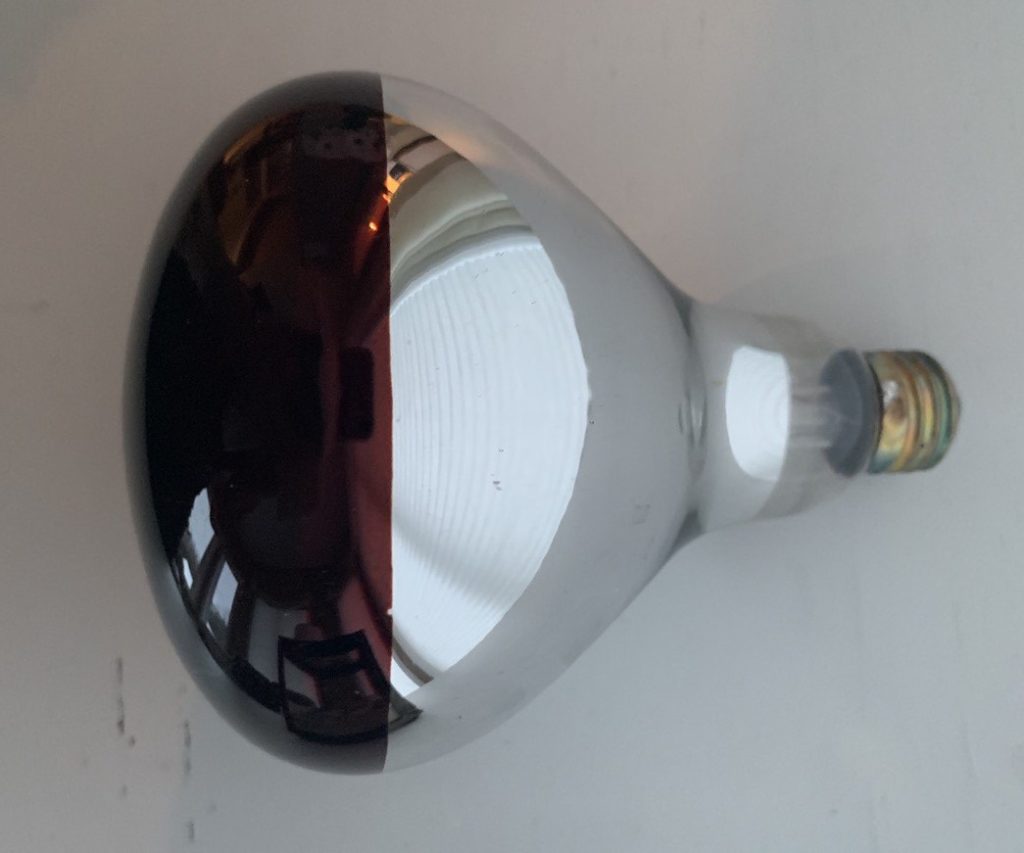
All of the studies referenced here used incandescent heat-lamp bulbs with both red-colored and water-based filters. While not readily available in the United States, normal red-colored heat-lamp bulbs contain the same infrared frequencies, but also include additional infrared light and heat. While studies on these non-water-filtered bulbs are scant, personal experience with simple, cheap heat-lamp bulbs has proven to me the value of their use. In my own personal experience, twenty-minute daily treatment sessions can start to provide muscle and joint pain relief as early as day two.
Infrared Heat-Lamp-Bulb Safety
Of note, some heat-lamp bulbs on the market have a teflon shatter-resistant coating. This could expose users to teflon-based chemicals during use and is best avoided. Bulbs that don’t have teflon coating are also readily available. During use, eye protection is warranted and bulbs should not be looked into directly. Typically, for a 250 watt bulb, treatment distance is around 18 inches. If the skin starts getting uncomfortably warm, increase the distance between the bulb and the skin. Incandescent infrared bulbs get quite hot and can be a fire hazard if used inappropriately. Keep anything flammable well away from the bulb surface.
Conclusion
Broad spectrum near-infrared therapy is a simple and inexpensive treatment for pain, inflammation and wound healing, among other potential applications. When used appropriately, light therapy appears to have significant potential for supporting and improving health.

